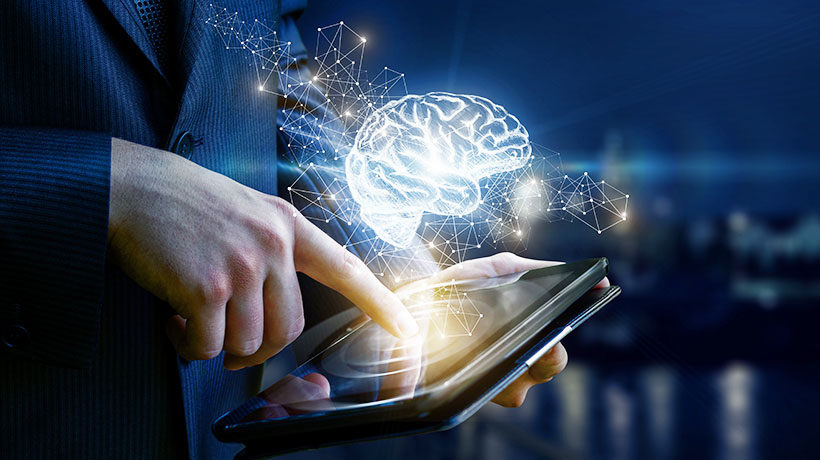Neuroplasticity has been a topic of discussion in the areas of brain research and development in the last few years. It refers to the ability of the brain to develop new connections between synapses due to various reasons. Few examples on the relationship between neuroplasticity and learning are shared in this blog.

What is Neuroplasticity?
The human brain is a complex part of the body and very little of it was understood even a few decades ago. However, increased focus on researching the brain has led to remarkable discoveries related to its functioning in greater detail.
In my previous blog, “Whole Brain Learning To Enhance Your Learning Experiences“, I have presented few ideas on how the brain functions when it comes to processing or digesting information.
A simple diagram was presented as below:

It’s not that different people use only a part of the brain, it’s just that different people due to nature of their profession, tend to focus on one part of the brain. For example, a chess player’s brain becomes accustomed to think everything in terms of black and white, whereas a painter’s brain is more in tune with the right side which is all about images/pictures.
While whole brain learning does explain how to design learning for different types of learners, it does not give us complete picture about how people can become more smarter or can learn newer things. This is where Neuroplasticity comes in.
Neuroplasticity as the name suggests that brain cells can reorganize themselves and create new connections. We will next see how this can be achieved.
Hippocampus-What is it?
The brain houses thumb sized structures deep within the center that helps humans to learn and remember new things. This structure looks like seahorse and is known as Hippocampus. It is Hippocampus that generates new brain cells everyday and these neurons form new connections.
An example of the evolving brain is difference in the size of hippocampus for a sales agent and a bus driver. While a sales agent travels multiple routes in a city and gets to know newer routes and meets many people, the bus driver drives in only a limited number of routes as assigned to him. The sales agent develops an ability to talk to various types of customers, sometimes to people who speak different languages or communities. If you compare the size of the hippocampus of both the professionals, the size of the hippocampus for the sales agent would be bigger.
Neuroplasticity and Learning
It has been suggested by researchers that by learning new things such as languages, art or even working on different musical instruments, our brain creates new synapses and forces us to expand our intellect. A synapse is the gap between one neuron cell and another. It is this synapse that carries electrochemical information between neurons. In other words, synapses are the key to neuroplasticity in learning.
Neuroplasticity in learning can be best observed in children as their brain is growing till the age of 16. Another case of neuroplasticity in learning alternate motor functions is observed when injury to the brain forces other parts of the brain to compensate for the loss of a function. Neuroplasticity is slightly static in adulthood; however, research has suggested that by learning new skills or acquiring new knowledge, neuroplasticity continues to evolve.
It is found especially when learning a new language, the brain’s grey matter grows and forms new synapses and forces neuroplasticity . The left inferior parietal cortex of a person learning a new language is bigger than that of a person who knows only one language. This is a good example of neuroplasticity in learning.
It was also found that those people who practice more on a particular skill such as learning music have bigger hippocampus and have greater grey matter in their brains as compared to those who practice less.
Training and Neuroplasticity
Having understood the power of neuroplasticity, we can now delve into how training interventions, games and other modalities can increase efficiency and productivity.
Apart from the regular training that is provided to the learners, the role of performance support in the form of interesting videos, new and varied supporting information via microlearning nuggets, short eLearning modules, games and gamified assessments helps challenge learners constantly and make them more engaged and interested in work.
Organizations can leverage or utilize the power of neuroplasticity in improving learning experiences to make their employees perform better.
A disengaged employee who has no support in the form of training or new information is likely to tune off and be less productive than his/her potential would suggest.
These are some tips to improve neuroplasticity:
- Cross-functional training on other functions that are relevant to the job
- Providing content curation on latest trends of a domain
- Providing regular assessments and trivia on a subject
- Microlearning nuggets to improve recall of key concepts learnt
Conclusion
To conclude, neuroplasticity and learning is an important concept and has helped us understand a bit more about how the brain functions. Let’s utilise this knowledge to provide interesting and varied trainings to learners.
You must be logged in to post a comment.









